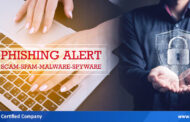Hackers are increasingly using brute force attacks to guess passwords and getting access to Windows RDP & Terminal Server. Once they get the access, they either use the compromised system as a bot or start accessing internal data of the server and desktop for critical/valuable information to steal. By design, these hackers also drop malicious codes in the infected systems to snoop around. In absence of any detection of such compromises, it could cost a loss of millions of dollars to these enterprises, apart from reputation loss.
The brute force attackers succeed due to the poor practice of not using strong passwords. These attacks can compromise the RDP servers or clients. This becomes the gateway for the hackers to scan and steal from across the network.
TSPM – Terminal Services Protection Module by eScan not just detects these brute force attempts but also heuristically identifies suspicious IP Addresses/Hosts. It blocks any attempts to access the system. In order to safeguard the systems from future attacks, the IP addresses and Hosts from these attacks are banned from initiating any further connections to the system.
Attackers would try to uninstall security applications from compromised systems in order to cover up their tracks and stop the administrators from getting alerts about the breach. eScan TSPM detects and stops these attempts too. Secondly, the administrators also get an alert about the preventive measures initiated by TSPM.
In the present landscape where attackers are trying to exploit every weakness, be it unpatched systems or inability of the users / administrators to maintain password hygiene. eScan’s TSPM would protect the systems/enterprises from such attacks.
Here are the important ways to protect the system from ransomware caused due to RDP:
1. Update your passwords regularly: It is important to change your passwords after a particular time period in order to throw the hackers off the trail.
2. Strong passwords are a must: A strong password consists of a combination of capital and lowercase letters, numbers and special characters. Do not share or reuse your unique passwords to anyone.
3. Update your systems regularly: Ensure to update your system software to the latest security fixes in order to patch the vulnerabilities.
4. Two-factor authentication: Ensure to implement two-step authentications for controlling administrator access.





